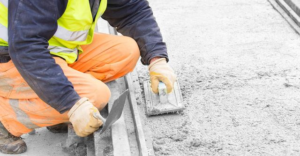Owning a house can be a great feeling of stability and settlement. It also offers a sense of achievement and pride. It is also a sound financial investment. However, there are a few things to consider before making the decision to buy a house.
While buyers will have different needs – commuters might want to be near transport links, families may prioritize schools and young professionals might seek out green spaces and local amenities – there are some basic requirements that are universal. Read on Altitude House Buyers for more details.

1. They have a lot of experience
Buying a home is not only a financial investment, but it can also be an emotional one. Consequently, buyers want to be confident that they are making the right choice. Whether they’re buying for the first time or are a repeat buyer, they want to avoid regrets down the road. The fear of making a mistake can make the process difficult, especially if the buyer has little market knowledge or expertise. Fortunately, there are several things that can help buyers feel confident in their decision.
A good real estate agent can help a buyer find the right home for their needs. They can assist with the research, negotiate the price and terms of a mortgage, and even handle the complex paperwork involved. They can also provide advice about the neighborhood, which is important for many prospective homeowners. Buyers should always work with a professional agent, and not a friend or relative. They should interview agents before hiring them and choose an experienced broker who will be a trusted partner throughout the process.
Most buyers have a list of features they’re looking for in their dream home. These include a location, size, and style. Ideally, the property should also fit their lifestyle. For example, commuters will look for a home close to their workplace, parents may want an area with good schools, and young professionals might seek a convenient location near public transportation.
However, some features are deal-breakers for some buyers. For instance, a funky floor tile or an outdated kitchen may be enough to turn them off. Other factors that can impact a buyer’s decision include the payment method (cash vs. financing) and the type of buyer (serious vs. investor).
2. They are trustworthy
When it comes to buying a home, buyers want to be confident that they can trust the people helping them buy the property. This includes their real estate agent, mortgage lender, and anyone else they work with. This is important because it allows buyers to make informed decisions and feel comfortable about the process. In addition, it ensures that they can trust their agents and lenders to provide accurate information about loans and interest rates.
One of the most important things to look for in a home buyer is their willingness to conduct a thorough inspection of your property. If a potential buyer is unable or unwilling to do this, it could be a sign that they are not serious about purchasing the property. This type of behavior should be a red flag and you should avoid doing business with this person.
Additionally, a serious home buyer will be able to provide proof of funds. This is a requirement for closing and shows that they are committed to the purchase. This is an important step in ensuring that you will get paid for your home and that the sale will go through without any issues.
In addition to being able to provide proof of funds, a direct home buyer will also be able to offer a fair price for your property. This is because they have extensive knowledge of local market trends and property values. This will help them to make an informed offer and avoid overpaying for your property. In addition, they will be able to handle all the necessary paperwork and closing costs on your behalf, saving you time and hassle. It’s also important to choose a company that operates locally. This will ensure that you have a smoother selling process and a better understanding of the area’s market.
3. They are honest
Honesty is an essential element in the real estate market. People want to know what they’re getting when they buy a house, so it’s important to be transparent in all interactions. This includes being honest about the condition of your home and the neighborhood. A good way to do this is to use clear photos that tell a story. It’s also a good idea to include the age of the roof and other relevant information in your listing. This will help buyers make an informed decision.
During a traditional listing sale, you’d have to spend time and money on prepping your home for inspections and showings. However, if you work with an honest professional home buyer, like Nice Guys Buying Houses, you can skip the prep and still get top dollar for your Greenville home. These professionals will also help you avoid costly delays in closing.
The first sign that a professional home buyer is honest is that they’re not afraid to disclose their financial situation. Most people don’t want to discuss their finances with complete strangers, but this is a necessary step in the home-buying process. If a buyer is reluctant to reveal their financial details, it’s likely they aren’t serious about shopping for a home.
Another sign that a professional home buyer is honest will be their willingness to negotiate. This is an important part of the sales process, and it can help you sell your home quickly and for a higher price. In addition, an honest professional home buyer will be willing to pay cash for your home, which can save you time and money. This is a major advantage over the traditional selling method, which can take months to close.
4. They are flexible
House buyers can be quite flexible when it comes to their requirements for a new home. While a family with children might have different needs to a young professional, there are some basic things that all buyers will want – such as a good location close to schools and transport links. If a house meets these criteria, then it is likely to attract interest from a wide range of people, especially in a hot market.
The current housing market has been challenging for buyers, with elevated prices and mortgage rates putting more pressure on their finances. In addition, the inventory of homes has been low and many sellers are receiving multiple offers on their properties. As a result, some buyers may end up losing out on the house they love. In this situation, it is important for buyers to remain flexible and focus on the positives of each property they see.
It is also a good idea for buyers to have a good real estate agent by their side when they are looking at homes. Their agent can help them to narrow down their options and make a strong offer that will stand out from the crowd. Additionally, they can recommend other neighborhoods that the buyer may not have considered and provide negotiating advice.
Another area where flexibility can pay off is with the closing date of a home. For example, if a buyer is transferring into town for work and needs to find a place quickly, then having a flexible closing date could be the extra incentive they need to make an offer.
5. They are reliable
When you’re selling your house, it’s important to find a buyer that is serious. Otherwise, they may not follow through with the purchase and could potentially get cold feet at closing time. This is why it’s vital to look for signs that a buyer is reliable, and here are some of them:
The first sign that you’re dealing with a serious home buyer is if they have an earnest money deposit in place. This is a small deposit that shows your commitment to the purchase and indicates that you’re serious about making a deal. The deposit is typically held by a real estate agent or attorney and is used as security against default on the mortgage.
A second sign is if they’re pre-approved for a loan. This will give you an indication of their financial situation and can help you avoid any issues down the road. In addition, pre-approval can speed up the process and help you close faster.
Another sign of a serious buyer is their willingness to negotiate the price. This is a common part of the home buying process, and it can be helpful for both parties. It also helps to have a trusted real estate agent who can assist you throughout the negotiation process.
Finally, a serious buyer will be willing to visit your property multiple times. This will allow you to see the property in different lights and determine if it’s truly what you want. For example, you can check out the neighborhood at different times of the day to see how noisy it is and whether there are any safety concerns. Also, you can test the commute time to your work and other nearby amenities.


